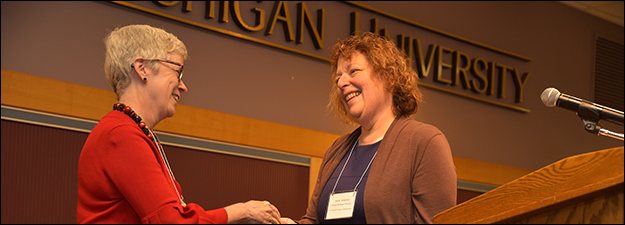Military Orders and Crusades in Comparative Perspective: The Levant, Spain, and the Baltic Region
Sponsoring Organization(s)
Center for Medieval and Early Modern Studies, Univ. of Florida; Research Group on Manuscript Evidence
Organizer Name
Mildred Budny
Organizer Affiliation
Research Group on Manuscript Evidence
Presider Name
Florin Curta
Presider Affiliation
Univ. of Florida
Paper Title 1
The Templars and the Confraternity of Belchite: A Comparison of Origins
Presenter 1 Name
Andrew Holt
Presenter 1 Affiliation
Florida State College at Jacksonville
Paper Title 2
An Archaeology of the Military Orders in the Holy Land?
Presenter 2 Name
James G. Schryver
Presenter 2 Affiliation
Univ. of Minnesota-Morris
Paper Title 3
Intraverunt terram horroris et vaste solitudinis: The Teutonic Order and Landscape Sacralization in the Crusade to Prussia
Presenter 3 Name
Gregory Leighton
Presenter 3 Affiliation
Cardiff Univ.
Start Date
12-5-2017 3:30 PM
Session Location
Schneider 1360
Description
Renewed interest in the history of the military orders has resulted in a rapid proliferation of studies dedicated to Templars, Hospitallers, and the Teutonic Knights, but no synthesis dedicated to minor orders, such as Calatrava or the Brothers of the Sword. Meanwhile, a particular sub-field of medieval archaeology dedicated initially to crusader castles in the Levant has begun to draw attention to similar phenomena in the Baltic region, inviting comparison. Aleks Pluskowski's Archaeology of the Prussian Crusade is the first book to compare systematically the Holy Land and the Baltic region. Missing, however, is a comparison with the Iberian Peninsula.
The session is meant to bridge that gap and to invite more discussion around the regional experiences of one and the same order (e.g., the Teutonic Knights in the Levant, in Transylvania, and in Prussia) or between different orders in different regions (e.g., the Order of Calatrava and the Brothers of the Sword respectively in Spain and Livonia). The material culture and the multiple studies based on the archaeology of the landscape (that go far beyond the analysis of single castle sites) offer a very rich ground for comparative work, but most archaeologists working in the Prussian lands do not read the literature on castles in Spain, and vice-versa. Thus, the session may illustrate what can be done to revise the historical record with the already exceptional amount of information available from archaeological excavations.
Mildred Budny
Military Orders and Crusades in Comparative Perspective: The Levant, Spain, and the Baltic Region
Schneider 1360
Renewed interest in the history of the military orders has resulted in a rapid proliferation of studies dedicated to Templars, Hospitallers, and the Teutonic Knights, but no synthesis dedicated to minor orders, such as Calatrava or the Brothers of the Sword. Meanwhile, a particular sub-field of medieval archaeology dedicated initially to crusader castles in the Levant has begun to draw attention to similar phenomena in the Baltic region, inviting comparison. Aleks Pluskowski's Archaeology of the Prussian Crusade is the first book to compare systematically the Holy Land and the Baltic region. Missing, however, is a comparison with the Iberian Peninsula.
The session is meant to bridge that gap and to invite more discussion around the regional experiences of one and the same order (e.g., the Teutonic Knights in the Levant, in Transylvania, and in Prussia) or between different orders in different regions (e.g., the Order of Calatrava and the Brothers of the Sword respectively in Spain and Livonia). The material culture and the multiple studies based on the archaeology of the landscape (that go far beyond the analysis of single castle sites) offer a very rich ground for comparative work, but most archaeologists working in the Prussian lands do not read the literature on castles in Spain, and vice-versa. Thus, the session may illustrate what can be done to revise the historical record with the already exceptional amount of information available from archaeological excavations.
Mildred Budny

